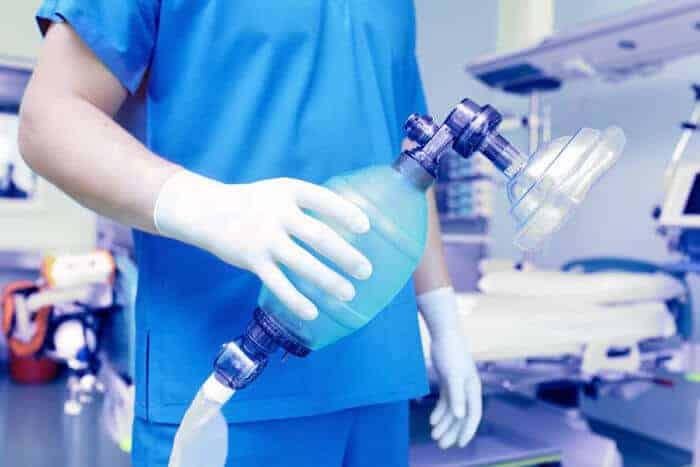A review presented at this year’s Euroanaesthesia Congress will address the environmental impact of inhaled anaesthetic agents and how we can and should manage without them – or at least massively reduce their use. The presentation will be given by anaesthesiologist Dr Niek Sperna Weiland, Amsterdam University Medical Center, The Netherlands, founder of the centre’s Sustainable Healthcare Team.
All volatile (gaseous) anaesthetics are potent greenhouse gases, ranging in global warming potential (GWP) from 440 to 6810 relative to carbon dioxide (CO2,) which has a reference GWP of 1. The anaesthetic sevoflurane has a GWP of 440, isoflurane 1800, and desflurane 6810. These are all extremely high. Methane, emitted by livestock around the world and other processes, has a GWP of 86, and Nitrous oxide (emitted by agriculture, but also used in anaesthesia) is 289, and this gas has an extremely long atmospheric lifetime (around 120 years).
“Reduction of emission of these gases is a quick win in combatting climate change,” explains Dr Sperna Weiland. “After use, these substances are emitted into the atmosphere and rising concentrations have been registered even in very remote areas such as Antarctica and high in the Alps.”
There are several ways to reduce emissions, which include ending the use of nitrous oxide, desflurane and isoflurane immediately, though a combination of efficient use of the only other available alternative (sevoflurane), and switching to other modes of anaesthesia such as TIVA (total intravenous anaesthesia) and regional anaesthesia (spinal/epidural/nerve blocks); and also capturing volatile anaesthetics from the exhaust air piping. “It is also hopeful that a complete ban on desflurane is now being prepared by the European Commission*, which would come into effect on 1 January, 2026,” explains Dr Sperna Weiland.
He will explain that while some indications for inhaled anaesthesia will remain, there is no reason why a patient could not be switched to TIVA or regional anaesthesia in most instances. “There is no evidence that volatile anaesthesia results in more favourable patient outcomes. That said, we cannot do entirely without these inhaled agents. The most common indication may be the continued need for mask induction of anaesthesia for children,”
He will also present the successful sevoflurane reduction campaign of Amsterdam UMC, which has seen annual cannisters used fall by 70% from above 2500 per year to below 1000. In line with previous recommendations, Amsterdam UMC also completely abolished nitrous oxide, desflurane and isoflurane.
This success has come without the hospital yet implementing capture and recycle technology. He explains: “In Amsterdam, we do not capture and recycle and yet we reduced our emissions by 70%. This seems almost as low as you can go with using sevoflurane efficiently and switching to regional/TIVA. For the remaining 30%, capture and recycling will be the only option. While technology that can do this is coming onto the market, there are some legal issues with marketing the recycled substance which must still be overcome before this can become widespread practice.”
Dr Sperna Weiland will address overall energy use in operating rooms (ORs), explaining “hospitals generally do not seem to have any clear policy on this, and indeed energy saving technology only tends to be introduced when operating theatres are refurbished, or entirely new hospitals are built. But as we ourselves have demonstrated, you really can save a lot of energy by switching off most ORs during evenings, through the night and over weekends. In Amsterdam, we save around 360.000 kWh per annum by doing this”.
For waste materials, Amsterdam UMC uses the apply the ‘reduce, reuse, recycle’ paradigm. A lot of the materials in ORs are disposed of unused, just because it was unwrapped due to protocol. Dr Sperna Weiland explains: “We are critically reviewing these protocols and also the sets that we use. Moreover, we have developed a washable surgical headcover that is being implemented this year. We will go from 100,000 disposable headcovers to just 500 per year, and save around 60% of our carbon footprint for headcover use. Lastly, we implemented a full recycling program of plastic packaging materials on all our operating rooms recycling around 4000 kg per month.”
He concludes: “Climate change has really come to the top of the agenda in many countries, in both developed and developing countries, especially in the last couple of years. Every sector must play its part in reducing both emission of harmful gases and overall energy use. It is clear that much can be achieved with relatively little effort, such massively reducing use of inhaled anaesthesia and general power saving techniques. Some national and international policies may be required to target remaining emissions, especially those associated with our supply chain, but at Amsterdam UMC we have shown what is possible with our own effort first.”
Dr Niek Sperna Weiland, University Medical Centre Amsterdam, The Netherlands. Please e-mail with questions and interview requests. E) [email protected] Alternative contact in the Euroanaesthesia Media Centre. Tony Kirby of Tony Kirby PR. T) +44 7834 385827 E) [email protected]

